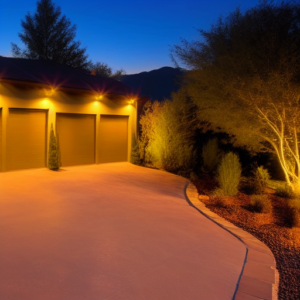
If you have an existing concrete surface that has been sealed before and are wondering if you can apply a new layer of concrete sealer over the old one, the answer is YES! Applying a new layer of concrete sealer over an existing sealer can help to extend the life of the sealant and improve its performance. In order to ensure the best results, it is important to properly prepare the surface before applying the new sealer. This includes removing any dirt, debris, and other contaminants, as well as ensuring that the old sealer is in good condition and is not peeling or flaking off.
Can I apply Concrete Sealer over Old Sealer?
Yes, concrete sealer can be applied over old sealer. The first step is to find out if the concrete has been sealed before. If it has, any old sealer can be removed by using acid etching or grinding, or using a sealer chemical remover. After that, thoroughly sweep the surface of all dirt and debris, and then deep clean the area. Once it is dry, fill any cracks that are present before applying a new reseal adhesion that is solvent-based. When applying a new sealer, apply the new coat of sealant carefully by mixing it thoroughly with any previously applied layers.
If you’re looking for a good quality solvent based acrylic sealer, there are several options available on the market today. SEAL-ONCE Concrete & Masonry Penetrating Sealer, for example, provides a non-yellowing finish that protects the appearance and structure of the concrete while also providing a semi-gloss finish. Epoxy cement sealers provide an extra layer of protection with their thick protective surface, while acrylic sealers offer protection against freezing, thawing, scratching, scuffing, and other damage with their low-gloss finish. There are also colored sealers like Colored Concrete Sealer X-4 that come in 20 colors for added aesthetic appeal, as well as Concrete Stain + Sealer in One, which waterproofs, strengthens, preserves, and beautifies in one step.
No matter which type of sealer you choose to use, make sure you follow the instructions carefully for the best results. It’s critical to remember that when applying a new sealer over an old one, you mix them together by reactivating the existing sealer with the new one.

How to Remove a Concrete Floor Sealer
Solvent-based concrete sealers are very durable and hard to remove, but they can be removed if you take the right steps. The first step is to determine what type of sealer was applied. If it’s a penetrating sealer that has been allowed to cure completely before applying another layer, you’ll need to use an acid-based remover such as muriatic acid or hydrochloric acid. For this type of cement sealer removal job, hire a professional who has experience with these chemicals.
The 2 Best ways to Remove a Sealant:
How to Remove with Chemicals -Using muriatic acid or hydrochloric acid, apply the solution to the sealer using a spray bottle. Let it sit for 10 minutes and then scrub it with a stiff bristle brush. Use a garden hose to rinse off any remaining residue.
How to Remove with Grinding -Use a diamond grinder to grind away the water-based sealer. If you don’t have access to one, hire a professional solvent-based acrylic sealer company that can do the job for you.
Factors to Consider Before Applying a Stamped Concrete Sealer
Before you apply a stamped sealer, you should consider the following factors:
- Type of existing sealer. If your floor has a penetrating sealant, make sure to remove it before applying another chemical seal coat. A penetrating sealer will only protect the surface of the old concrete and not penetrate into its pores as acrylic or urethane can. This means that while they may look clean at first glance, they don’t actually protect your floor’s integrity over time–they’re more like paint than concrete protection!
- Condition of existing sealer. You may want to consider removing old coatings if they’ve been worn down by heavy traffic or other elements such as weathering or staining (like oil spills). In this case, it’s best just to start fresh with fresh materials rather than trying to add an additional layer onto an existing surface that might not hold up well in certain areas due to its age/conditioning process being incomplete at best — especially if those areas are exposed regularly through normal use patterns within your home environment (elevator doors leading upstairs corridors often get lots of foot traffic so I recommend taking care when choosing what goes underneath them).

Steps in Applying Concrete Sealer Over Old Sealant
- Prepare the surface.
- Clean the surface.
- Remove the old acrylic sealer (if necessary). You can use a pressure washer with a mild detergent solution or a pneumatic tool with an abrasive pad to remove old sealants from concrete, stone, and masonry surfaces before applying the fresh coat of exterior concrete sealer. Avoid using wire brushes because they will damage the surface of your substrate material and make it difficult for the new concrete sealant to adhere properly to it later on in this process!
- Make sure you have plenty of paint brushes and 6-inch rollers, as well as metal roller frames and handles.
- Wear a respirator, eye protection, and gloves.
- Apply sealant in 10ft x 10ft sections. Allowing enough time to dry in between coats.
If you do choose to remove all existing materials from your driveway or patio using chemical strippers like “Klean Strip”™ brand products then be sure not to leave any residue behind since these chemicals can ruin the integrity of any new coatings applied afterward which could lead them to peel off prematurely within just one year from now, costing both money wasted as well as time spent cleaning up messes like these after they happen frequently and tend to cost money each time they occur. Worrying about these breakdowns adds to your stress levels, making it difficult for you—and the rest of us
Decorative concrete sealer is a great way to protect your concrete surfaces and make them last longer. It’s important to choose the right seal coating for your needs and make sure that it’s applied correctly before applying another layer over the existing sealer.
Our Locations:
Nashua, NH
North Hampton, NH
Concord, NH

